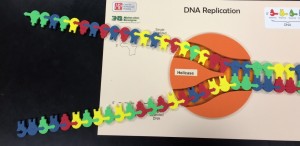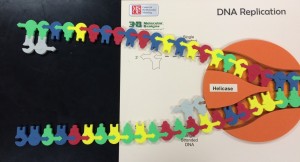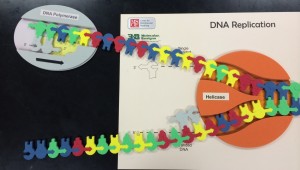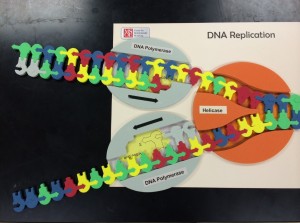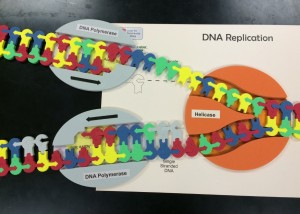Kit purchased from

Helicase “unzips” DNA by breaking hydrogen bonds:
Primase adds primers (gray-colored nucleotides) to the 3′ ends of the parent strands:
DNA Polymerase attaches to the leading strand and begins adding nucleotides in the 5′ to 3′ direction:
DNA Polymerase attaches to the lagging strand and will move away from the replication fork when adding nucleotides in the 5′ to 3′ direction:
Helicase continues to break hydrogen bonds so he DNA polymerase on the leading strand will continue adding nucelotides in the 5′ to 3′ direction toward the replication fork, whereas a primer must be added to the parent strand of the lagging strand so DNA polymerase can continue synthesizing the lagging strand which is composed of Okazaki fragments:
DNA polymerase continues to add nucleotides in the 5′ to 3′ direction while moving toward the replication fork in the leading strand. DNA polymerase aslo adds nucelotides in the 5′ to 3′ direction on the lagging strand but move from the replication fork toward pre-existing Okazaki fragments:
After DNA replication is complete, an enzyme will remove the primers and insert deoxyribonucleotides. The result of DNA replication is two identical molecules of DNA:

